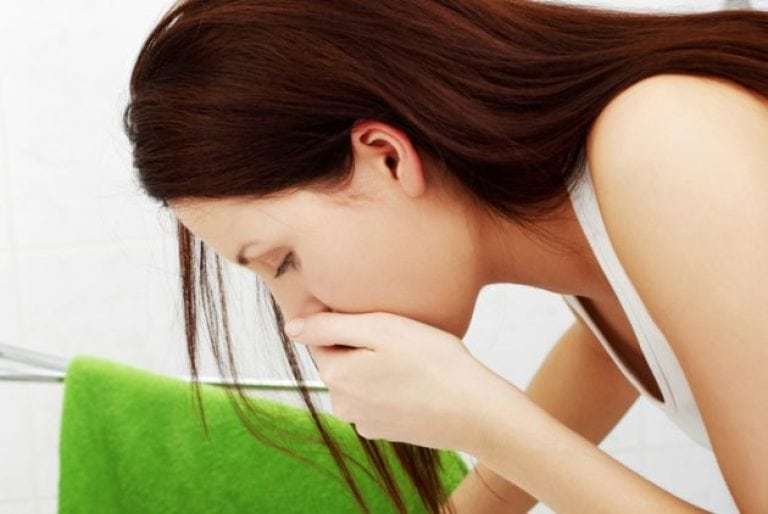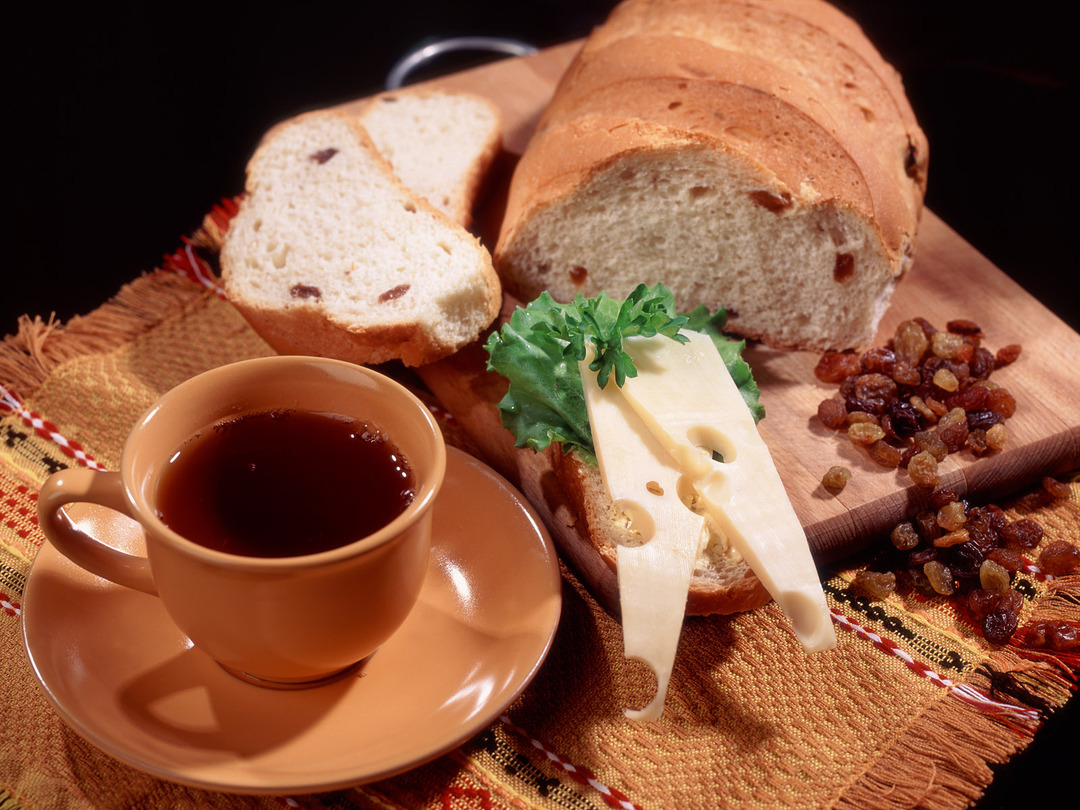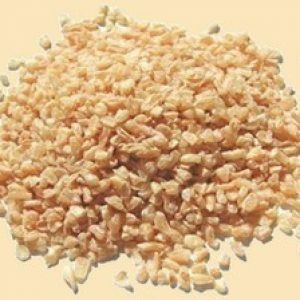Food poisoning in adults: symptoms and treatment at home
Food poisoning - an acute illness resulting from the consumption of low-quality foods and drinks affected by bacteria, pathogens, their toxins or chemicals. The main manifestations of poisoning are expressed in indigestion (diarrhea, diarrhea, severe nausea and vomiting).
The danger of food poisoning is as follows:
- incubation period: 2 to 6 hours;
- the disease develops very quickly;
- is massive, that is, everyone who has consumed a spoiled product gets sick.
Content
- Causes of food poisoning
- Provoking factors
- Food Poisoning Symptoms
- Classification of food poisoning
- Diagnostics
- Treating food poisoning
- Medicines
- What can be done at home in case of poisoning
- Fast-acting folk remedies for mild poisoning
- Prophylaxis
- Statistics
- Video
Causes of food poisoning
Poisoning occurs as a result of the penetration into the body of toxins, infections, pesticides contained in plants, meat, water, as well as due to the ingress of toxic chemicals with which these products processed. Thus, the main causes of poisoning are:
- non-compliance with hygiene standards, such as unwashed hands;
- the use of low-quality products: expired, spoiled (improper storage of food and water leads to the development of pathogenic bacteria in them);
- the preparation of dishes, food, by a person infected with an infectious disease, about 60% of food poisoning occurs for this reason;
- improper heat treatment or its absence during the preparation of raw products: meat, fish, milk, eggs, etc.;
- the use in food of products that contain toxic substances, for example, inedible mushrooms;
- eating dirty foods, especially fruits and vegetables in contact with the ground.
Provoking factors
The following factors contribute to the development of food poisoning in the body:
- temperature conditions (20-40 “C degrees - an ideal environment for the reproduction of bacteria);
- high humidity (is one of the main factors provoking the development of microbes);
- storage time of the product (it takes about 1.5-2 hours, so the cooked food must either be eaten immediately (within an hour) or stored in refrigerator);
- food prepared in catering establishments, shops, in violation of sanitary standards.
Food Poisoning Symptoms

The time when the first symptoms of poisoning appear depends on the condition and age of the patient, microorganism that has entered the body, its quantity and the well-being of the environment necessary for the development diseases. On average, the first signs in an adult appear after 4-8 hours, in a child after 1-2 hours. In case of poisoning with poisonous mushrooms, this time is reduced to 15-20 minutes.
The first manifestations of the disease are expressed:
- pain in the abdomen (pain syndrome can be dull, aching, acute, depending on the area of the lesion of the food system);
- nausea and vomiting (thus, poor-quality food is excreted from the body, therefore, after an attack of vomiting, there is a slight relief);
- diarrhea (by the color and condition of the stool, you can determine which microorganisms have entered the body).
- diarrhea (in this case, it also relieves the body of toxic products, but if it is abundant, then this can lead to dehydration);
- fever (one of the body's ways of fighting harmful bacteria, but it does not manifest itself in all types of poisoning);
- headache,
- general weakness.
Read also:Menu for a nursing mother by months - a table according to Komarovsky
Prolonged vomiting and diarrhea can cause dehydration, with the following symptoms:
- thirst;
- pungent odor, dark color and decreased amount of urine;
- dizziness;
- dry mouth;
- pain in the eyes;
- increased heart rate.
If you do not start treating the patient, then the condition will worsen. A severe form of poisoning is characterized by:
- shortness of breath;
- weak and accelerated pulse;
- confused consciousness, the occurrence of hallucinations;
- depletion of the body;
- lack of urine;
- low blood pressure;
- cramping and lack of sensitivity in some limbs.
If, in a severe form of poisoning, measures are not taken in time to cure the patient, then the person can get serious complications and even die.
Classification of food poisoning
Poisoning is divided into infectious (microbial) and non-infectious.
- To microbial include poisoning caused by Escherichia coli, bacilli, enterococci, enterotoxigenic staphylococci, botulinum bacilli, microscopic fungi, etc.
- Non-infectious poisoning appear due to the ingestion of poisons, toxins contained in products or chemicals. Diseases of this group are divided into non-microbial and chemical.
Poisoning resulting from the ingress of poisonous products is called non-microbial. Which are divided into initially poisonous (or by nature) and acquiring toxicity under certain conditions. The first subgroup includes poisoning with inedible mushrooms, wild plants, some molluscs and fish species, the second - raw beans, sprouted potatoes, liver, mussels caviar and pike milk, burbot.
The causative agents of chemical poisoning are nitrates, nitrites, pesticides, heavy metal salts. These substances can get onto food during processing.
Also, food poisoning has 2 types of development: non-inflammatory and inflammatory.
- The first type is less dangerous, since microorganisms act on the mucous membrane of the small intestine without penetrating it. Such poisoning mainly manifests itself in the form of diarrhea and general weakness.
- The inflammatory type of poisoning leads to the death of mucosal cells. The patient has diarrhea with bloody discharge, but the diarrhea is not so thin and infrequent, therefore, severe dehydration in this case is rare. The temperature rises, vomiting begins, possibly affecting the nervous system.
Diagnostics
The diagnosis is based on: determination of the clinical picture (first symptoms), manifestation diseases in several people at once, identifying one common cause of poisoning (for example, one and the same same product).
In order to concretize the cause of the poisoning, blood tests, vomit, feces and products that were consumed by the sick are carried out.
If there is a suspicion that the poisoning is of a viral nature, then an express blood test is done, if there is a possibility, that the disease is caused by toxic substances, then the blood is examined for the presence of toxins and samples of those used are taken products.
Treating food poisoning
Today, there are several methods of treating food poisoning: medications, diets, washing, folk remedies. The main thing in the treatment of this disease, like many others, is to start the procedures as early as possible, to prevent the transition of poisoning to a severe form.
Medicines

Most drugs that help rid the body of pathogens and restore the patient's condition are recommended to be used after going to the doctor. This is especially true for antibiotics and pain relievers.
During poisoning, it is worth using drugs that prevent diarrhea, so you prevent one of the ways to cleanse the body. If you do not have diarrhea, then it is better to cause it with laxatives.
One of the most common medications to take during poisoning is Activated carbon. It absorbs harmful substances, playing the role of a sorbent. The rate of application of activated carbon is a 10 kilogram tablet.
Read also:Eating disorders
Also, the following drugs can perform the function of such a "cleaner":
- Smecta;
- Enterosgel;
- Lactofiltrum;
- Polysorb.
These medicines are best taken in the absence of vomiting. Contraindications are: an increase in temperature and stomach ulcer. Also, older people and children are recommended to use it only after consulting a doctor.
Poisoning is characterized by depletion of the body, during diarrhea and vomiting, both harmful and useful substances are released. Therefore, in order to restore the mineral balance, it is recommended to take preparations containing trace elements, glucose, for example,
- Regidron;
- Oralite.
After cleansing the body of pathogens, it is necessary to normalize the intestinal microflora. Probiotics will help with this, namely the following drugs:
- Hilak Forte;
- Linex;
- Bionorm.
What can be done at home in case of poisoning
More often, food poisoning (especially in adults) is tried to be treated at home. Therefore, in order to avoid serious consequences and quickly recover the victim during home treatment, it is necessary to do procedures in the following areas:
- removal of harmful substances from the body;
- prevention of dehydration;
- restoration and maintenance of intestinal microflora;
- adherence to a diet to restore the functioning of the digestive system.
The first point to remove harmful substances primarily involves gastric lavage. Best suited for this weak solution of potassium permanganate. It should have a pale pink color. As a result, you will get 1.5-2 liters of solution. If there is no potassium permanganate, then you can dilute sea salt in water, or baking soda, thus causing artificial vomiting.
To complete the cleansing of the body, it is recommended apply sorbents. Everyone has them in the house. The most common of these is Activated carbon.
The second direction in home treatment is the restoration of water balance. The main rule here is to consume as much liquid as possible, it is recommended that after each attack of vomiting or diarrhea, drink 100-200 grams of liquid. Still mineral water, boiled water, or glucose saline solution. Drink in small sips to avoid triggering the gag reflex again.
Next, you need to restore the intestinal microflora. Many people forget about this, although this stage is especially important in treatment. Since most of the nutrients were released during the cleansing of the body. Beneficial bacteria will help to replenish the microflora, in another way they are called probiotics (Hilak Forte, Linex)
The final stage is diet. During the poisoning itself, as a rule, the patient has practically no appetite. At this point, the main thing is not to forget to drink. In the first days after the illness, it is important not to overload the body with food, for which it is worth following a diet. Eliminate dairy, spicy, fatty foods, alcohol from the diet. Eat better in small portions 5-6 times a day. During this time, it is good to consume the following foods:
- boiled rice;
- potato;
- crackers;
- bananas;
- boiled lean meat.
Read also:PP diet - follow the right diet for weight loss
Fast-acting folk remedies for mild poisoning
#1. Lemon juice.
Lemon juice is a good anti-inflammatory and antibacterial agent. Its acid will help destroy bacterial germs in the body. We take half a lemon and squeeze out the juice, add a teaspoon of sugar to it and take this drink 2-3 times a day. But this method cannot be used in the treatment of patients with gastritis stomach, high acidity and other diseases of the gastrointestinal tract.
#2. Infusion of cinnamon
Such an infusion will be a good sorbent and antispasmodic. Prepare it like this: pour half a teaspoon of cinnamon with a glass of boiling water. After 15 minutes, the solution must be filtered. Usage rate: 1 liter of infusion for 1 day, take in a warm state.
#3. Dill broth with honey.
Dill not only helps to cleanse the body of harmful microorganisms, but also relieves vomiting attacks. Honey traps beneficial bacteria. To prepare a drink, take a teaspoon of dill seeds, fill it with 1.5 cups of boiling water and let it brew for about 2-3 minutes. Next, boil the liquid for 2 minutes, filter and add a teaspoon of honey. A liter of broth can be drunk during the day.
#4. Caraway seeds.
They will help relieve stomach inflammation after poisoning. Take a tablespoon of ground cumin seeds, swallow it and drink it with a glass of water.
It is important to remember that there are times when the treatment should be carried out only with the supervision of a doctor. This applies to the following categories:
- children under 3 years old;
- pregnant and elderly;
- poisoning with poisonous berries, mushrooms;
- severe poisoning (diarrhea 10 times a day, bleeding, temperature above 38 degrees, etc.).
Prophylaxis
Every person has the likelihood of getting food poisoning, but in order to reduce it, you must adhere to the following rules:
- follow the rules of hygiene, wash your hands before eating and while preparing it;
- carry out cleaning of food (fruits, vegetables), if necessary;
- do not eat raw foods if heat treatment is necessary for them (meat, fish, eggs);
- make sure that the temperature in the refrigerator is not less than "-30" degrees;
- do not eat products of which you are not sure of the quality, try to be careful about food from catering establishments. Do not overuse dishes with mayonnaise and sauces;
- do not store canned food unopened for more than 2 years, open - for more than a day;
- Eat mushrooms and berries only those in the edibility of which you are sure.
Statistics
Unfortunately, every year the incidence of food poisoning increases. According to statistics, the death rate from food poisoning per year is about 2 million, of which 75% are children under 14 years of age. Despite these numbers, it is worth saying that it is quite easy to get rid of poisoning and its consequences if treatment is started on time and correctly carried out.



